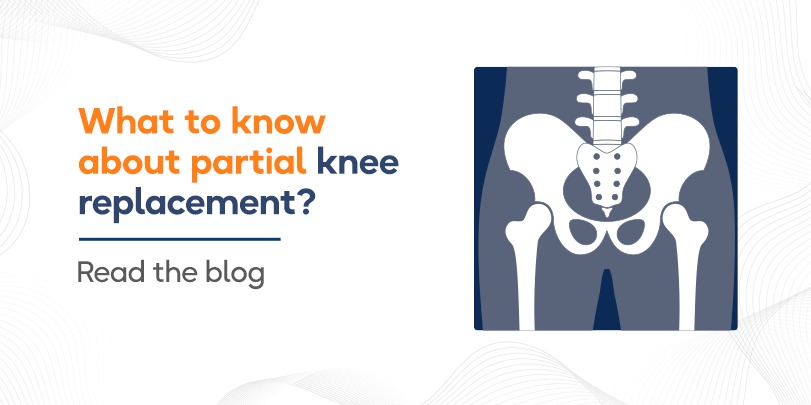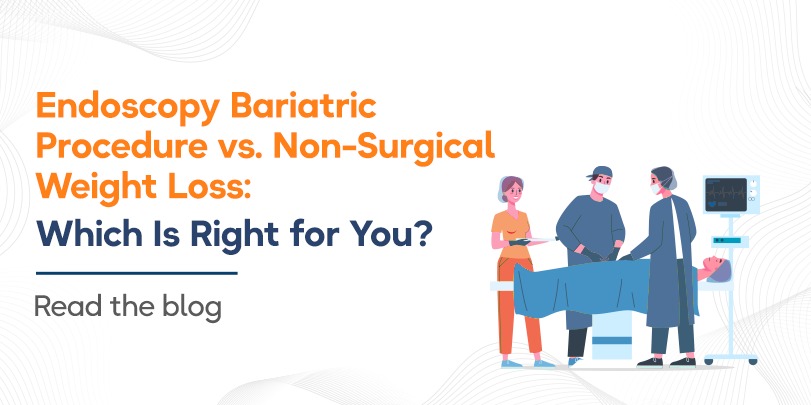While hip replacement in Ahmedabad is one of the most common joint replacement surgeries, knee replacement in Ahmedabad is also on the same list. While total knee replacement is an often done process, you may want to know about partial knee replacement too. Remember not to delay your knee replacement surgery.
Unicompartmental knee arthroplasty or partial knee replacement is a surgical procedure designed to alleviate knee pain and restore function in individuals suffering from knee osteoarthritis. Unlike traditional total knee replacement, which replaces the entire knee, partial knee replacement focuses on a specific compartment of the knee joint affected by arthritis. In this blog, we will delve into the essential aspects of partial knee replacement, including its benefits, candidacy, surgical procedure, recovery period, and more.
Understanding Arthritis, including Osteoarthritis, and Knee Pain
Arthritis of the knee, specifically osteoarthritis, is a common condition characterized by the deterioration of the cartilage surrounding the knee joint. This deterioration leads to pain, stiffness, and limited motion. People with knee arthritis often experience discomfort when walking, climbing stairs, or engaging in physical activities. Read more about the dos and don’ts of knee pain on our blog.
Arthroscopy surgery in Ahmedabad is a great option when you have damaged cartilage and bone. What you need to know about partial replacement – apart from the fact that there is less pain & that partial knee replacement recovery takes a shorter time – is what happens during partial knee replacement.
The Concept of Partial Knee Replacement
partial knee arthroplasty targets one part like the knee cap or knee ligament affected by arthritis, either the medial (inside) or lateral (outside) compartment. Unicompartmental knee replacement involves removing damaged bone and cartilage and replacing it with an implant, which can restore stability and alleviate pain in the affected area.
Identifying Good Candidates
It is not true that partial knee replacement is right for all patients with knee arthritis. A good candidate for a partial knee surgery typically exhibits arthritis in only one part of the knee. As compared to a total knee candidate, their knee may have relatively intact ligaments and possesses a healthy range of motion. A thorough evaluation by an experienced surgeon is crucial to determine if you are a good candidate for partial knee replacement.
Surgical Procedure
The partial knee replacement procedure involves the surgeon making a small incision around the knee, and gaining access to the affected compartment. The damaged bone and cartilage are removed, and an implant made of metal and plastic is precisely positioned to recreate the natural knee joint mechanics. This procedure preserves healthy bone in the knee, ligaments of the knee and the unaffected particular compartment of the knee.
Benefits of Partial Knee Replacement
Partial knee replacement offers several advantages over traditional total knee replacement. These include smaller incisions, reduced blood loss, quicker recovery time, preserved natural knee anatomy, and improved ability to move. The focused approach of partial knee replacement allows for a more targeted and less invasive procedure.
Recovery Time
Compared to total knee replacement, you will spend a much shorter recovery time in the recovery room. This is particularly beneficial for individuals with osteoarthritis of the knee, as they can experience relief from pain and improved mobility within weeks after surgery. Physical therapy and rehabilitation are crucial components of the recovery process after partial knee replacement, especially if the orthopedic surgery led to more than regular blood loss during surgery.
Following surgery, physical therapy helps to regain strength, flexibility, and functionality of the knee joint until the knee feels comfortable. Rehabilitation exercises are tailored to the specific needs of each patient, focusing on improving the range of motion and strengthening the surrounding muscles. These exercises also help to restore stability to the knee, reducing the risk of further complications.
In most cases, partial knee replacement patients can gradually resume their daily activities within a few weeks after partial knee replacement. However, it is important to note that individual healing and rehabilitation progress may vary. Some patients may require more time to fully recover and regain their pre-surgery level of function. The surgeon and physical therapist will provide guidance on the appropriate timeline and activities for each patient.
In cases where only one side of the knee is affected by arthritis, a epicondylar knee replacement, also known as a partial knee replacement, may be performed. This procedure targets the specific knee part that is damaged, preserving the healthy side of the knee. By addressing the instability of the knee caused by arthritis, partial knee replacement can significantly improve the overall function of the joint.
Post-Surgery Care and Precautions
Following a partial knee replacement surgery, it is important to follow the surgeon’s instructions for post-operative care. This may include managing pain and swelling, adhering to a prescribed exercise regimen, and gradually increasing activities. It is crucial to avoid excessive strain on the operated knee and to notify the surgeon promptly if any complications arise.
Your artificial knee can last more than 10 years after surgery, as replacement implants are made for long-term use. Studies show that replacements last much longer, but people with knee damage where one knee or both, one and the opposite knee have undergone one or more types of knee surgery, whether a partial or following total knee replacement due to issues elsewhere in the knee, should always consult a doctor.
When Total Knee Replacement May Be Required
In some cases, partial knee replacement may not be suitable due to the severity of arthritis or the involvement of multiple compartments. In such instances, a total knee arthroplasty, which replaces all three parts of the knee joint, may be recommended to restore functionality and relieve pain.
All in all, when one compartment of the knee or a single compartment of the knee of the three compartments of the knee are the only affected compartment of the knee, and there is no other portion of the knee that needs to be replaced, undergoing total knee replacement is not recommended.
When considering partial knee replacement, choosing a reputable healthcare provider like Radiance Hospitals can make a significant difference in your experience and long-term outcome. At Radiance, we understand the impact that knee pain and limited mobility can have on your daily life, and we are dedicated to helping you regain your freedom and legacy. Our compassionate team of skilled surgeons and comprehensive care approach ensure that you receive the best possible treatment, enabling you to continue creating a lasting legacy with renewed vitality and joy.








